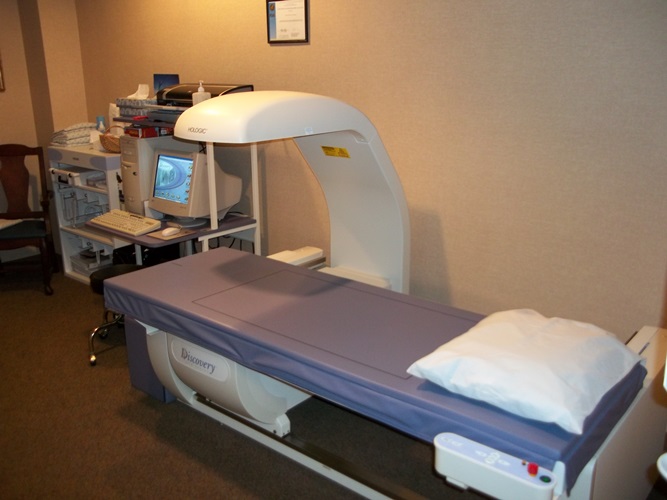Bone Density Testing (DEXA)
DEXA stands for 'dual energy X-ray absorptiometry'. It is a test that measures the density of bones. Density means how much of something there is in a certain amount of space. The denser the tissue, the less X-rays pass through. Air and water are less dense than solid things such as bone. This is because the particles which make air and water are not held closely together. In general, the more dense the bone, the stronger it is, and the less likely it is to break.

Patients must alert the technologist if they may be pregnant.
Who should have a DEXA scan?
A DEXA scan may be advised if you are at increased risk of osteoporosis. Osteoporosis usually causes no symptoms at first. However, if you have osteoporosis, you have an increased risk of breaking a bone. (See separate leaflet called Osteoporosis for more details.) If a DEXA scan shows that you have osteoporosis, then you may be given advice and treatment to help strengthen your bones. Therefore, a DEXA scan may be advised if you have:
-
A fracture following a minor fall or injury.
-
Loss of height due to fracture of a vertebra (back bone).
-
Taken steroid tablets for three months or more.
-
An early menopause (aged less than 45).
-
A history of periods stopping (amenorrhoea) for more than one year before the menopause.
-
Other disorders associated with osteoporosis such as rheumatoid arthritis or coeliac disease.
-
A family history of hip fracture on your mother's side of your family.
-
A body mass index of less than 19 (that is, if you are very underweight.)
